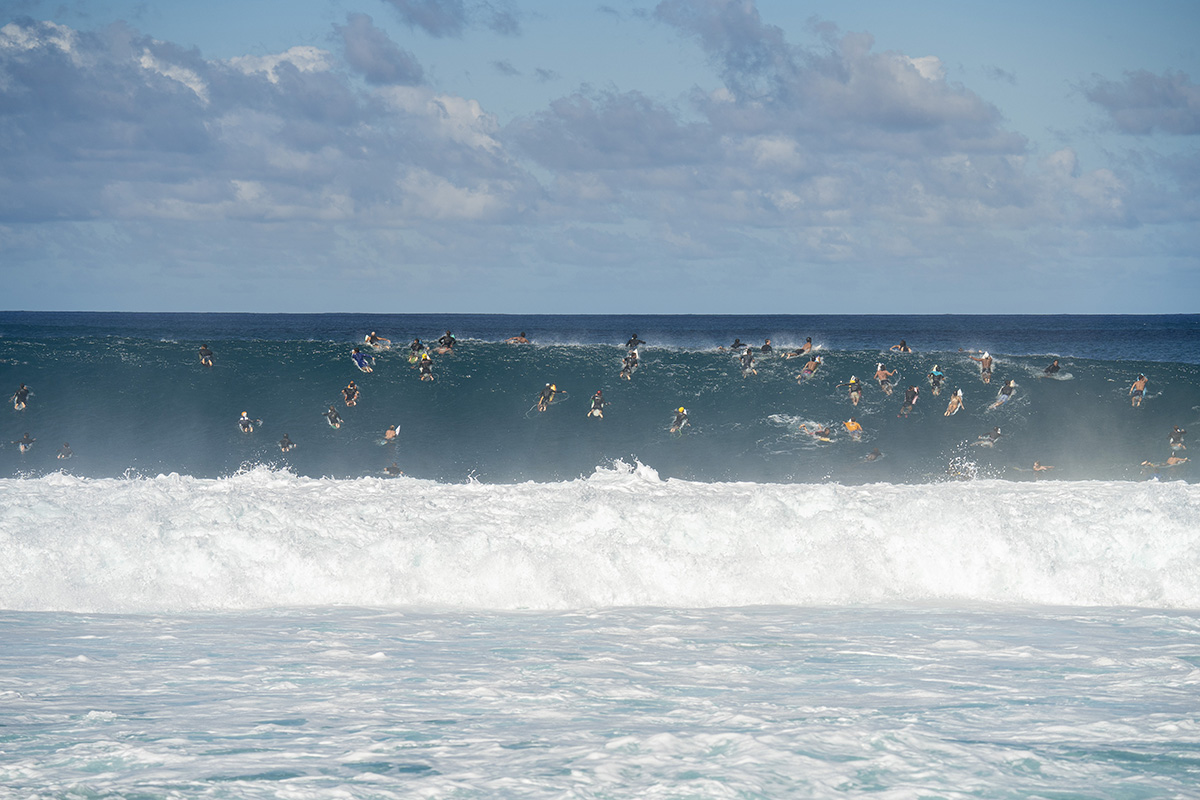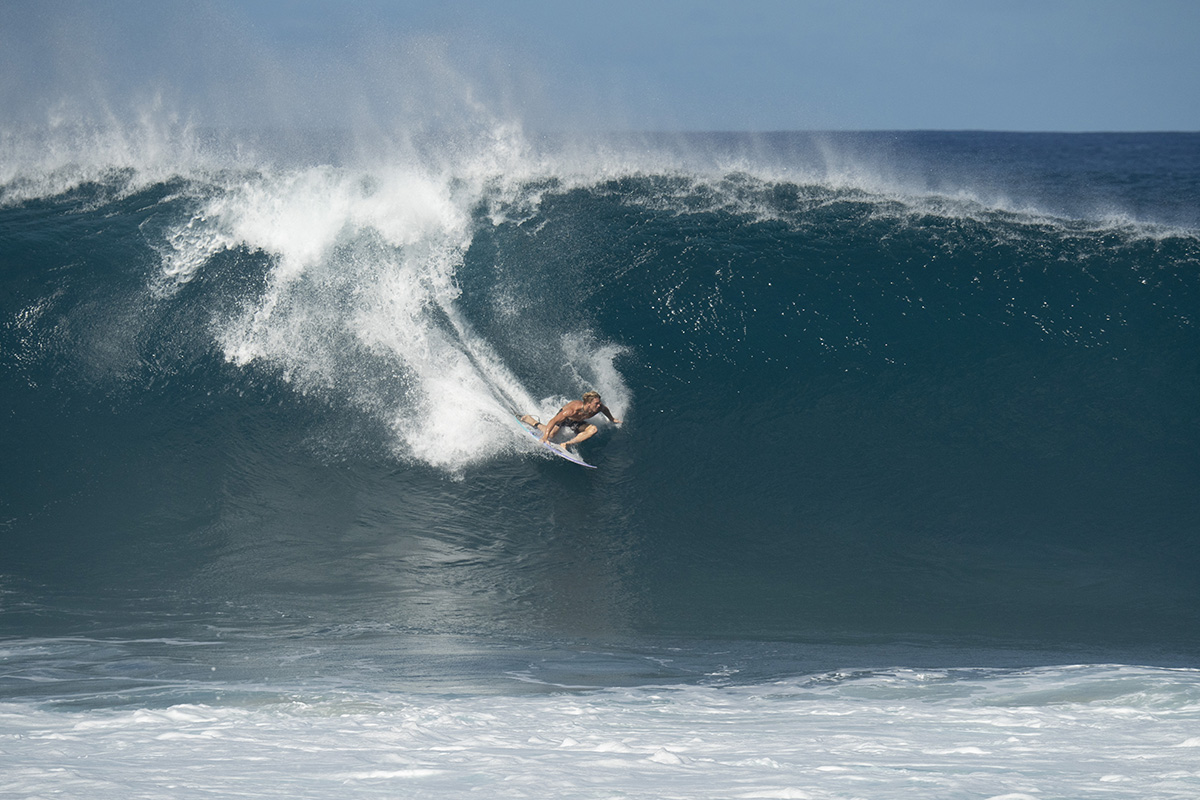By Jenn Gidman
Images by Matthew Morris
Matthew Morris captures epic surfing moments with precision using the Tamron 150-500mm VC lens.
Before 2020, Matthew Morris owned a concierge business on Maui, booking high-end restaurants, car rentals, and various activities for tourists. Then COVID hit, bookings dried up, and Matthew started experimenting more with taking pictures to pass the time during lockdown. Astrophotography, real estate images, and even weddings all made their way into his portfolio mix. Then Matthew discovered the allure of surfing photography.
“I bounce between Maui and Oahu, and I’m the rare person here who doesn’t surf,” Matthew says. “But when the lockdown lifted and we were able to go to the beaches again, I discovered I really enjoyed taking pictures of the action.”
One of Matthew’s go-to lenses for surfer art photography: the Tamron 150-500mm Di III VC VXD ultra-telephoto lens for his Sony mirrorless camera system. “This versatile lens provides the reach to zoom in on the action from a distance, while still allowing me to widen my perspective and capture the entire scene,” he says. “It’s also very compact for its size—when collapsed, it easily fits in the upper part of my backpack—and the Vibration Compensation feature is killer. It’s incredible to be able to maintain sharpness in challenging conditions, like when I’m being jostled by the waves.”

150-500mm (165mm), F7.1, 1/1000 sec., ISO 250
The Tamron 150-500mm ultra-telephoto also fits with Matthew’s aesthetic. “I’m known for my tightly cropped, laser-focused images,” he says. “I’m also not afraid to get into the water. Many photographers will park themselves on one bench or in one spot along the beach and stay there for the entire morning—meaning they’re essentially shooting down on the surfers. I’ll head down to the shoreline and squat so I’m able to shoot up at the waves and the surfers. It makes them all feel larger than life.”

150-500mm (150mm), F7.1, 1/2000 sec., ISO 400
MATTHEW’S QUICK TIPS FOR SURFING PHOTOGRAPHY
Rise early, stick around late.
Before the sun comes up, the water has what the surfing world calls “morning sickness,” when the waves are wonky and choppy. I’m not sure of the scientific reasoning behind it, but once the sun hits the water, it starts to “clean up.” The best time of day here for photos is during the early morning hours, preferably between 8:30 and 11:00, before the sun gets too angled.
Shooting in the evening, meanwhile, can provide stunning backlit waves, especially when there’s some cloud cover or varying cloud thicknesses. This lighting setup creates a beautiful display of aquas, greens, and blues.

150-500mm (500mm), F9, 1/640 sec., ISO 100
Go manual.
Shooting in manual mode allows for full control over the camera settings and ensures consistent results. I don’t like the feeling of the camera trying to guess what I want. Once I have my camera set for the current conditions, I don’t do a lot of changing on the fly. I can’t have a surfer coming down the line and be asking myself, ‘Should I change the aperture here? Let me look at my exposures and do a test shot.’ Set up and go. Yes, a cloud might drift in during an inopportune time, but if you’re taking enough pictures, you can afford to lose a few due to changing conditions.
Settings suggestions for surfer art photography.
Protecting the exposure of the surfer is crucial for surfer photography, even if it means slightly blowing out highlights, like the lip of the wave. Depending on conditions, shooting with a wider aperture can create a dreamy feel, especially when incorporating foreground or background elements. I also tend to shoot at least at 1/1000 to 1/1250 of a second, so I can freeze the water.

150-500mm (500mm), F10, 1/1000 sec., ISO 250
Center the surfer when possible.
There’s more than just a surfer on a board in these scenes, and unpredictable moments on the water can lead to unique compositions. Placing the surfer in the center ensures that other important elements, such as the wave itself or surrounding details, are captured within the frame. You’ll have the flexibility in post-production to crop the image if needed.

150-500mm (500mm), F10, 1/2000 sec., ISO 400
Master the timing.
Understanding the sport and “reading” the wave for surfer art photography can help you anticipate the surfer’s movements. For instance, if I see a surfer already deep in the wave, I know I’m likely not going to get a shot of him coming through the barrel. But I can still perhaps capture him coming out of the “doggy door,” or exit part of the barrel, right before it closes in on him. Or maybe the light will hit the wave’s lip at the perfect moment—it’s like a crystal when that happens.

150-500mm (500mm), F13, 1/500 sec., ISO 160
Take the shot and don’t hold back. Surfing photos require a willingness to take risks and capture the moment without knowing the outcome. Don’t worry about filling up your memory card or taking too many shots. Embrace the freedom of digital photography—you can delete unwanted photos later.

150-500mm (466mm), F11, 1/2500 sec., ISO 800
To see more of Matthew Morris’ photos, check out his Instagram.
Is your Tamron News subscription up to date? Click to subscribe to all editions of Tamron News featuring how-to tips, new product news, contest announcements and inspiration!
